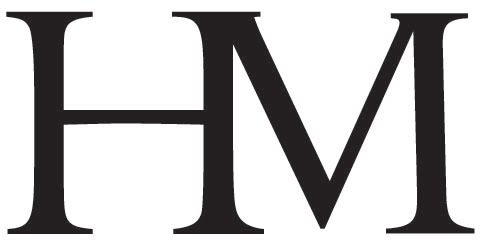Printing The Dunwich Horror is underway, one sheet down, 12 more plus a few extras (incl. a prospectus) to go. I’m printing two up = two pages on each side of a sheet, folded to make 4 pages. Two sheets to each section. I can work off one side of a sheet in a day, so a sheet takes two days to complete. Unless there’s a second color, which adds a third day. I need to maintain some routine to life, so one-color sheets will get printed Monday/Tuesday, two-color sheets on Thursday/Friday/Saturday. Wednesday and Sunday are resupply days (groceries, wine), plus an hour to dampen the paper for the next day’s run.
The paper is laid: I have to keep track of rough and smooth sides, so that verso and recto of each opening match (and thus alternate through the book, smooth/rough/smooth etc etc). Luckily the Hayle paper I’m using has two watermarks that make it easy.
Winter in Vancouver is a good time for printing, it’s easy to keep the sheets damp. My system involves simply keeping the two stacks of paper - to be print & printed - under very thick cotton towels that have been soaked and thoroughly wrung out. They get spritzed with water a few times during the day, if & as required. Overnight the stack simply stays wrapped in a towel and put in a contractor-grade (= thick) garbage bag.
I heard second-hand that Jim Rimmer counselled starting a new book somewhere in the middle, to bury any initial hiccups. I always start with the center opening from a section: since the two pages will be facing each other, it’s a good place to establish your color (impression, inking) for the project.
Briony’s well into making sketches for her aquatints, but we’re not sharing those, at least not for now. (The image at top is an old plate, a test of paper to be used for covering the boards.)
The dunwich.ca site will be updated later this month with all the project details. Unlike previous HM books, this one will be available for direct reservation and purchase, and there will be a pre-publication discount.
Above is one of the book’s eight tailpieces concocted from Bodoni ornaments. These will be printed in bronze (how I will be spending my Saturdays).































